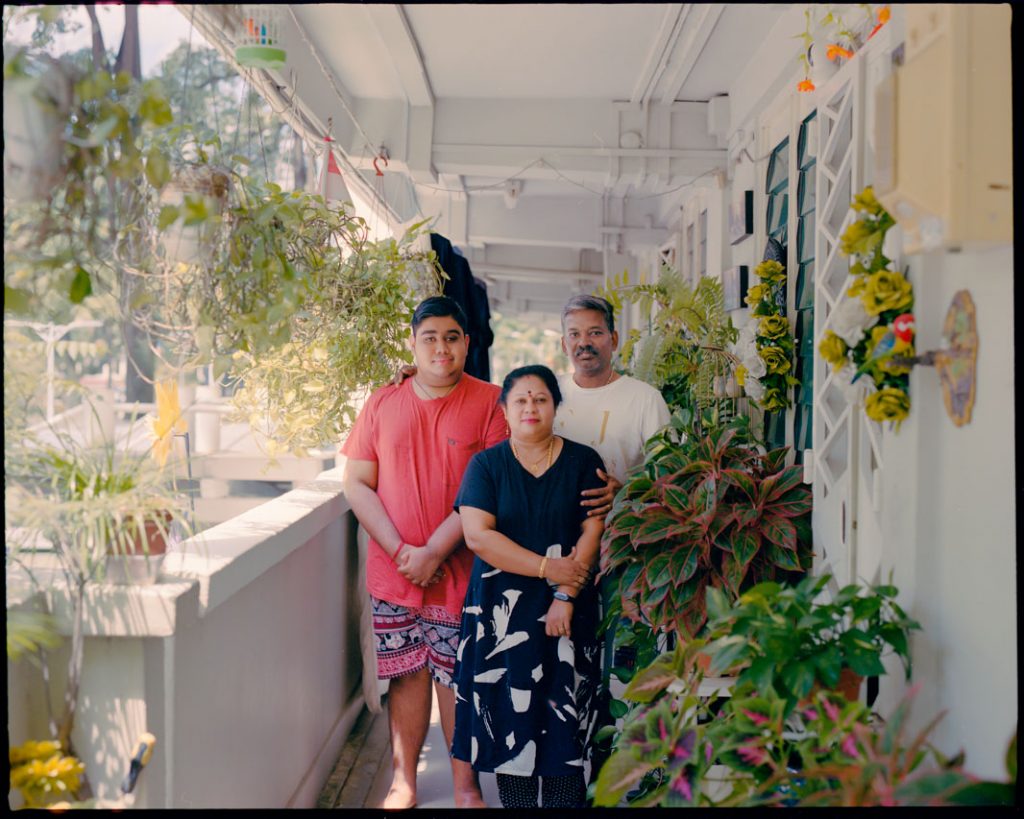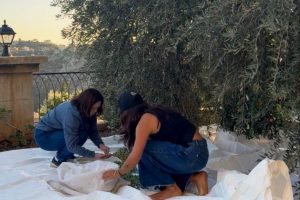All images by Stephanie Lee for RICE Media.
I’m sure nearly everyone knows of 34 Whampoa West, the HDB block with the longest curved common corridor in Singapore.
Spanning up to 320 metres on each level, it takes nearly four minutes to get from one end to the other. Fun for kids playing block catching, but probably not so much for delivery workers.
Much has been said about this lengthy corridor, but there’s one thing I’ve always wondered: What about the people living there? If the common corridors outside public housing units were originally envisioned as social interaction spaces, would it mean that this block—with 46 units per floor—is the ultimate hotspot for kampung spirit?
The only way to find out is by being a kaypoh neighbour myself and taking a photographic stroll across the seemingly endless corridors.
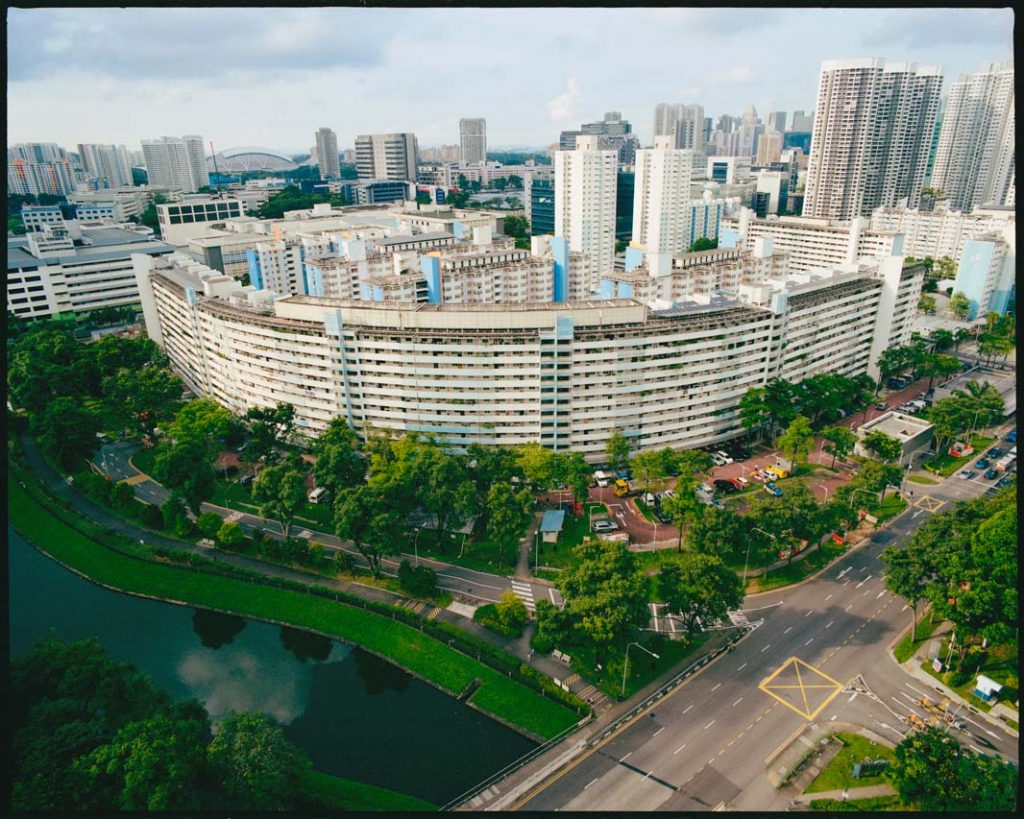
Between 2 doors
It’s 8 AM on a Friday when I set foot at the block. I had a strategy in mind—start from the highest floor, photograph people and things along my way down.
Everything’s oddly quiet and calm. It’s not how I imagined a block in an old estate to be—bustling with retirees making their way to the market for morning kopi and kaya toast.
It takes me a few floors before I bump into Htet Nay, sitting along the corridor by himself and appreciating the view outside. He’s enjoying a moment of calm after his night shift at a nearby factory.

The 26-year-old Burmese national has been living in Singapore for nine years—seven in a rented unit at 34 Whampoa West.
“What makes this neighbourhood special to you?” I ask.
“It’s near town, and my workplace is just across the street. You can get a lot of things from the market and grocery stores, and the neighbourhood is quite beautiful.”
“Do you always sit here alone?”
“Nowadays, yes. In the past, there was this one flatmate that I used to hang out with a lot. We would always sit along the corridor to chill and play games like Mobile Legends. But he has moved out,” he reminisces with a faint smile.
As for his relations with other neighbours, Htet Nay only says hi to someone living five units away. It’s surprising, considering how open he was to being interviewed and photographed.
“In Singapore, people just mind their own business. They might not like it if we try to be friendly and approach them. Because they never tried to talk to me, I also never talked to them.”
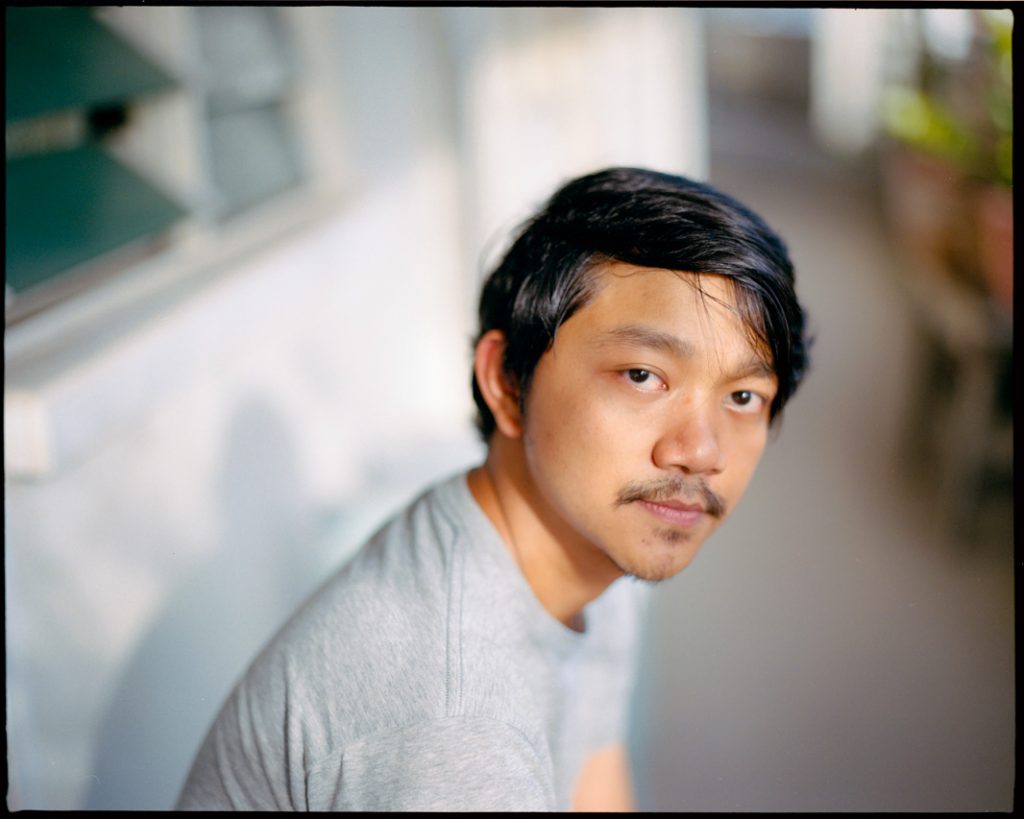
Things are very different between neighbours in Myanmar, he elaborates.
“You would not only know neighbours on your level but everyone living in the block.”
“This country is fast-paced, right? People are always competing with one another, trying to get to higher places. So they don’t bother about the community and set personal boundaries.”
Htet Nay
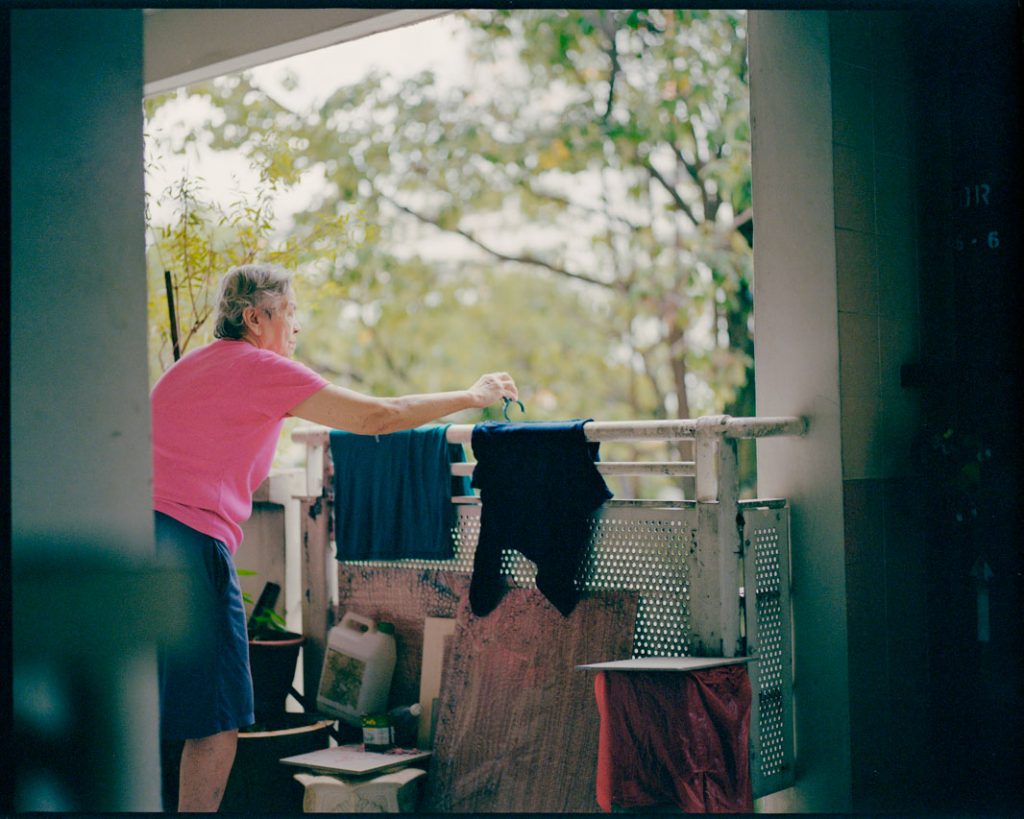

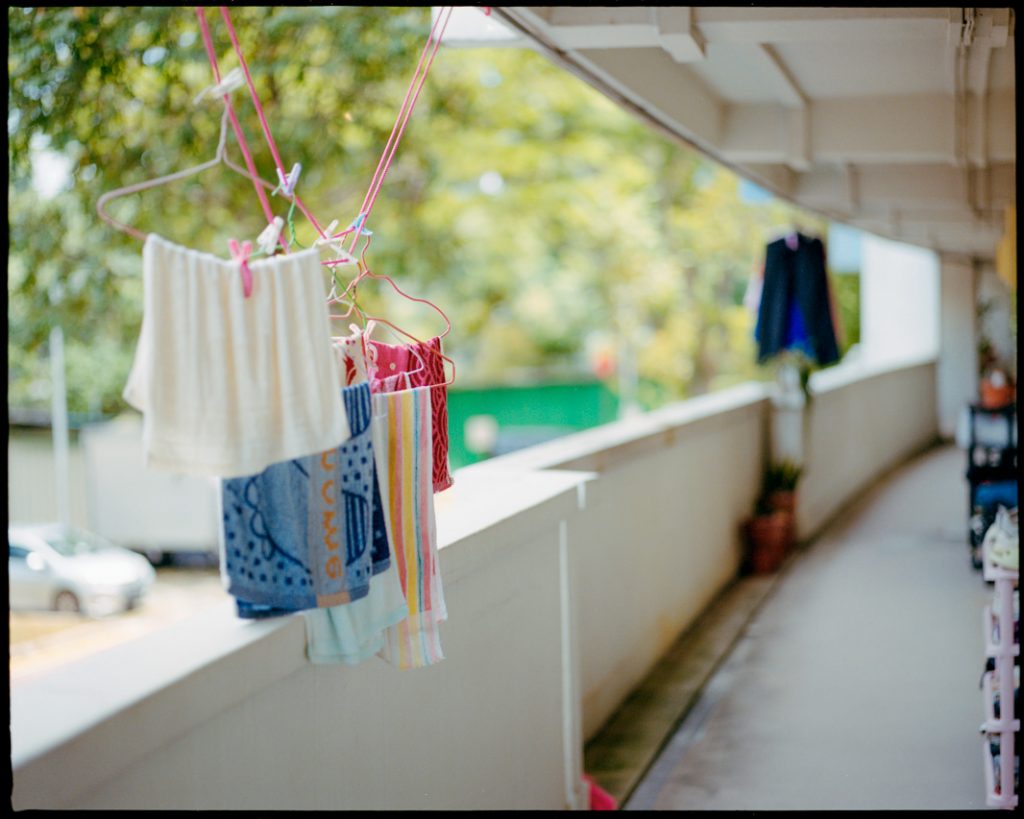

We seem to be a pragmatic lot, too. Everyone I interviewed for this story cited convenience as the main reason why they like living in this neighbourhood.
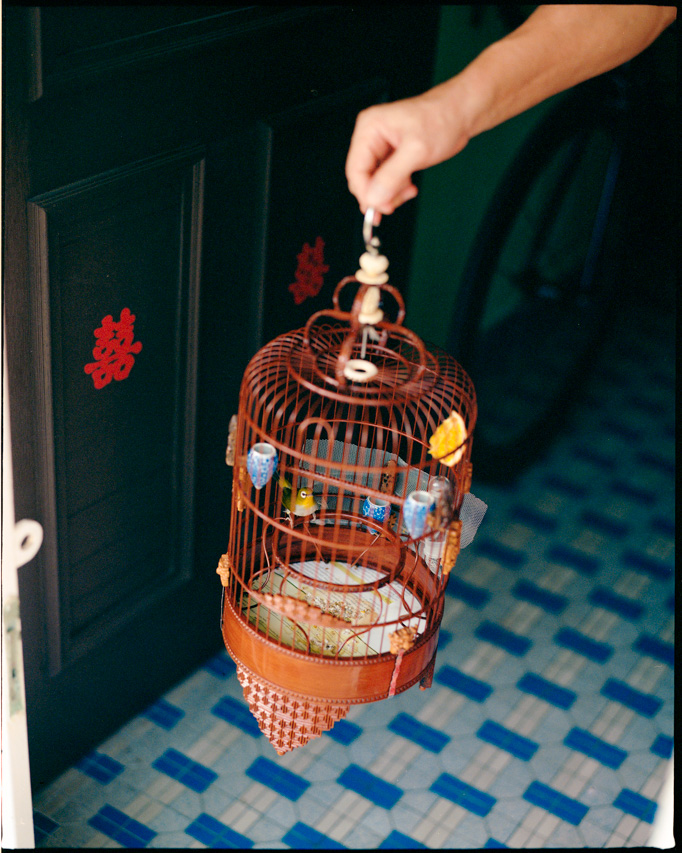
Uncle Wang moved in about 20 years ago to be closer to his mother-in-law’s home and his son’s primary school. The 65-year-old’s house is filled with bird cages.
All his bird enthusiast friends have moved out, he says. How does he make friends now?
Uncle Wang points at his birds. “These are my friends.”

I can’t help but feel a sense of loneliness while walking and speaking to the residents around the block.
“Maybe they are perfectly okay with being alone? You shouldn’t project your feelings on them,” Farah, a former RICE colleague, commented after I shared my experience.
She’s right. My idea of neighbourliness is largely influenced by my mum, a woman who knows which of my neighbours’ children did not give a monthly allowance to their parents.
Auntie Chong, 72, is a great example of someone who’s perfectly okay with not socialising. I asked if it bothered her not to have friends in the neighbourhood after staying here for 14 years.
“It’s okay. I stay with my mum and my son visits me once or twice a week, and that’s enough,” she replies matter-of-factly.

She shares that she doesn’t have any immediate neighbours, anyway. The apartment on her right is being rented out, while the apartment on her left is now empty—her neighbour moved out to live with her son.
It’s a common thread throughout the block. It appears that many of the units at 34 Whampoa West are empty or rented out, either because the owners passed on or moved to live with their children after falling ill. The remaining elderly residents are staying by themselves or with their helpers.
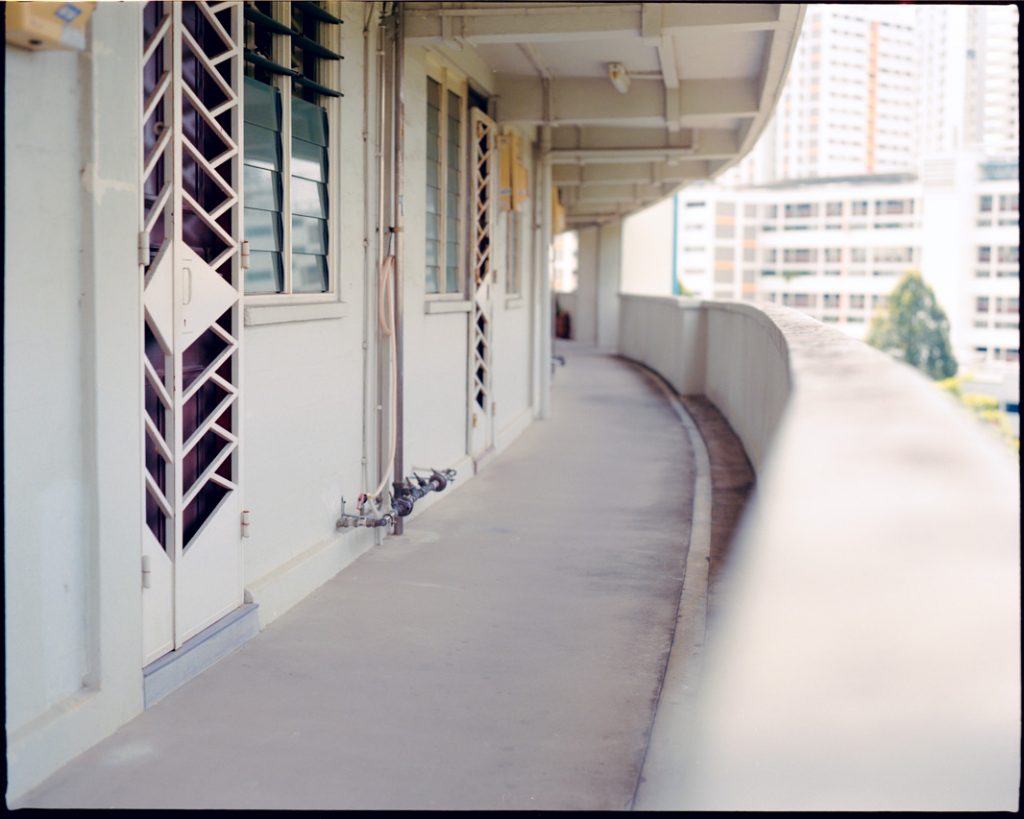
Generation Mix
It proved pretty challenging to find a young resident to speak to—a young couple immediately shut their front door after I interrupted them grooming their dog. I was sitting on the stairway for a break when I met Jimmy, who hurriedly walked past me with his friend.

“The long corridor is the reason why I say hi to all the uncles because they do their gardening there,” Jimmy remarks when we reconvene for a chat.
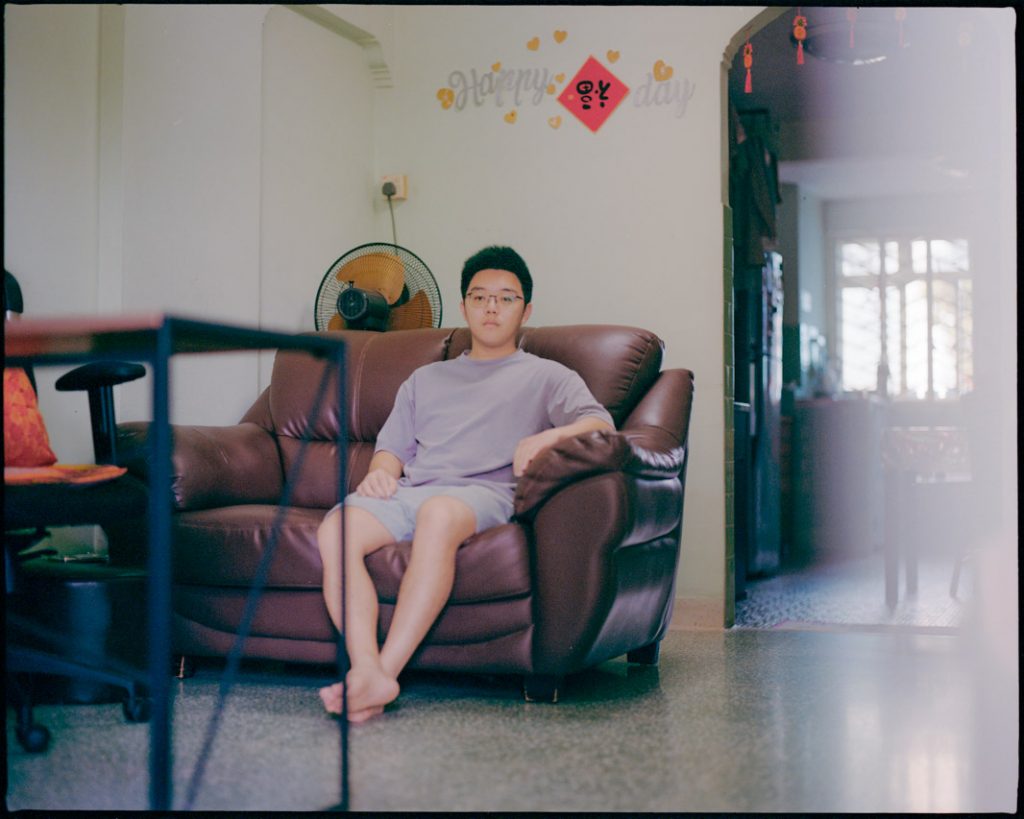
The 27-year-old adds that he feels more comfortable around older people as they seem more open and easygoing.
He goes on to explain, “I don’t care for it, honestly; to be close to my neighbours. It takes effort, and I’m very busy with my life”.
Compared to Auntie Chong and Uncle Wang, who are comfortable with little social interaction, Jimmy recognises that his generation is getting lonelier thanks to social media.
“It gives the illusion that we are very close to everybody and have a lot of access to everyone’s life. But we don’t bother catching up with them in real life.”
Auntie Yao’s opinion coincides with Jimmy’s.
“The younger generation keep their heads down and look at their phones. They won’t look at you or be close to you.”
At 95 this year, she’s still standing strong. I catch her for a conversation while she tends to her plants.

When Auntie Yao first moved in during the ‘70s, she made many friends with her neighbours, who looked for her to tailor their qipaos. Times are different now, she says, as “all [her] friends have either passed away or moved out.”
“There is another neighbour at level 12 who is past 90, but she is no longer active.”
Midway through our conversation, one of her tenants waved goodbye as he left for work. Auntie Yao rented out both her rooms because she wanted company—she was afraid nobody would notice if something bad happened to her one day.
She’s close with one of her tenants. Shang Hong, a Malaysian restaurant worker, has been staying with her for five years after he moved in when he was 22.
She would mend his jeans when they got ripped at work and treated his foot wounds when they got infected.
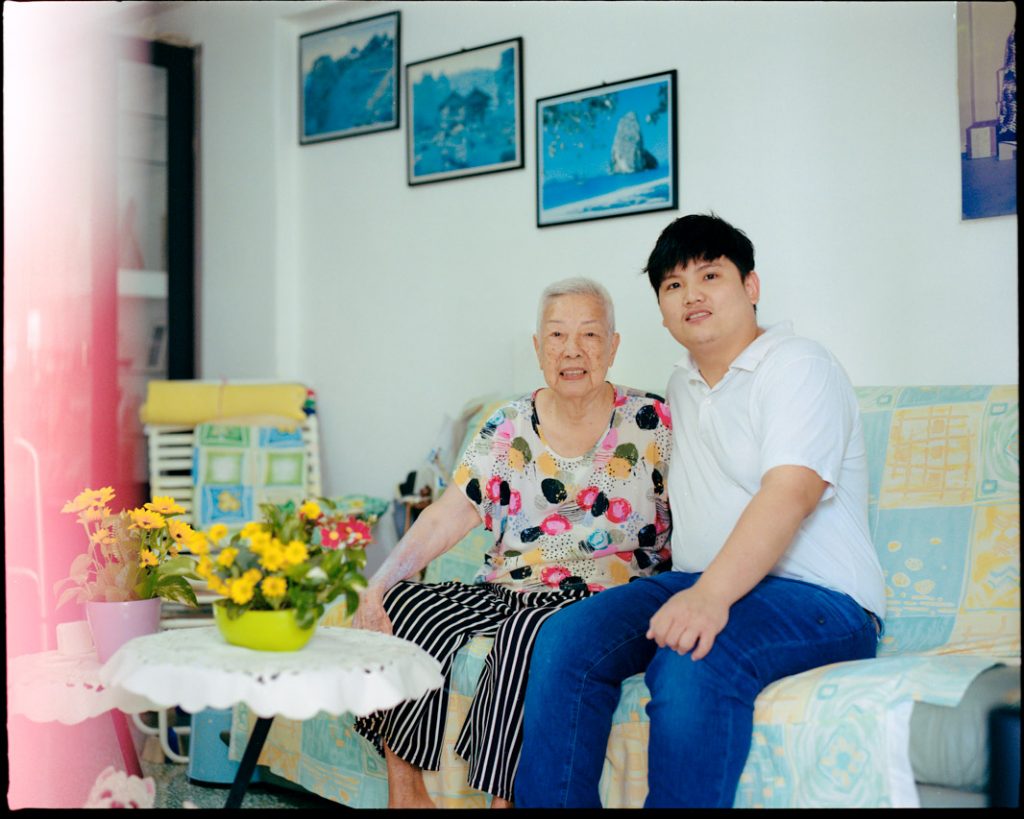
After snapping a photo of them, I ask Shan Hong how he describes their relationship.
“She’s like my own grandmother,” he replies, giving Auntie Yao a little squeeze on her shoulder.

Say Hi to Your Neighbours
While Auntie Yao found kinship with her tenants, Buvana found it with her neighbours. The 41-year-old mother moved in with her husband and father-in-law 16 years ago after her marriage and had two daughters here.
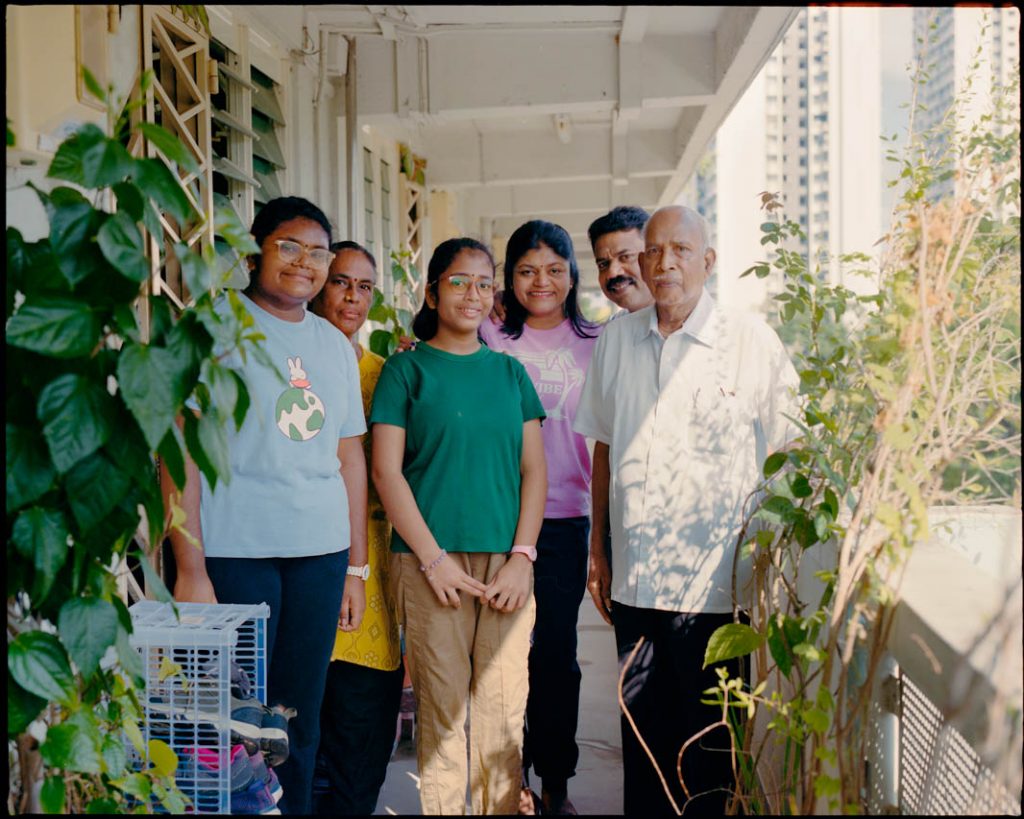
“I mean, who talks to the neighbours now?” she quips when I ask if she is close to her neighbours.
Buvana’s joking, of course—she knows nearly everyone on her floor. She rattles off the different profiles of her neighbours who live along the same corridor as her—another family with two daughters, an auntie next door who has green fingers, and so on.
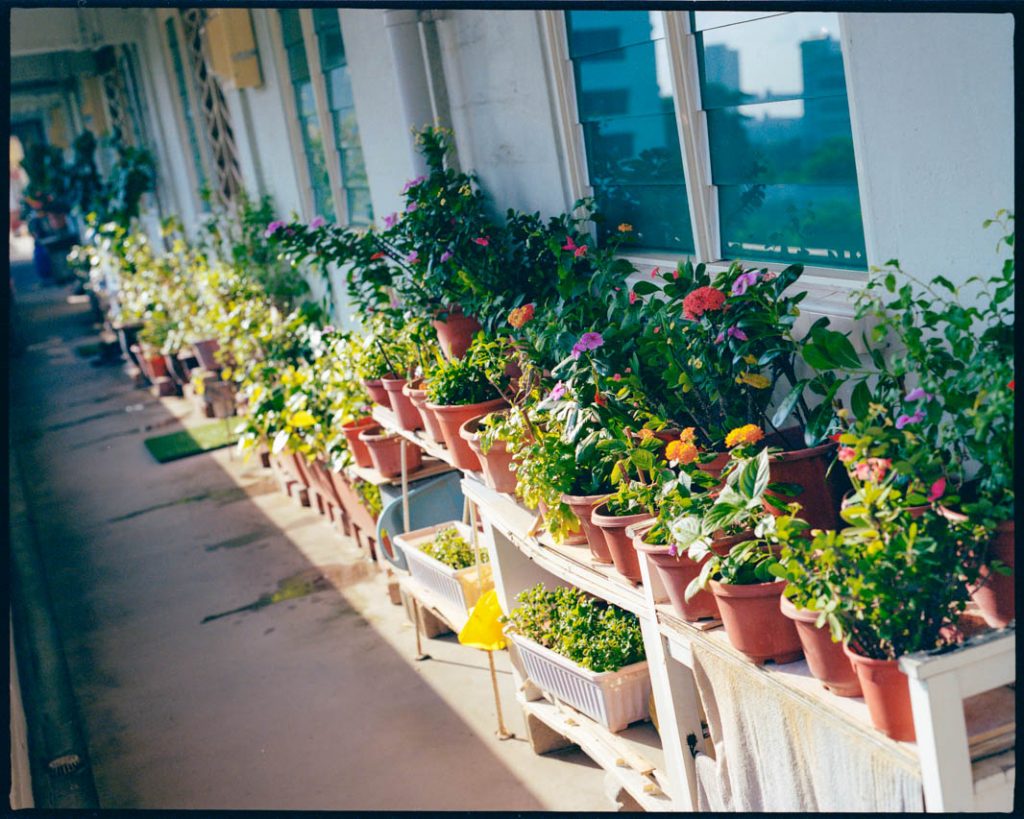
Buvana leaves the front door open when she’s at home because it’s the culture in her corridor.
“During Hari Raya, our neighbours have a habit of giving us their festive goodies. So at Diwali, we would give them Murukku. Then, during Lunar New Year, they would give my kids ang bao,” she beams as she recounts these fond memories.
Finally, someone who knows the neighbours. I ask Buvana if she thinks her daughters will keep up with the neighbourliness when they grow up.

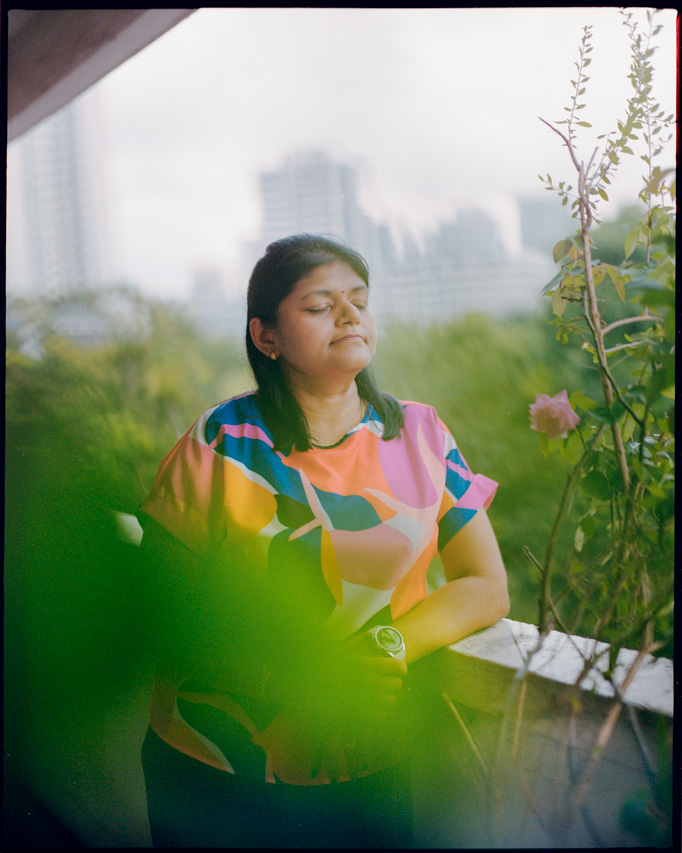
She gestures to her daughters.
“I’m not sure whether this generation would because they are always on their phones. But I hope my daughters will be friendly, respectful and good human beings.”
Buvana then directs me to a level where three sisters live in separate units on the same floor.
Auntie Nisha*, 62, has lived at 34 Whampoa West for 17 years. She claims to know about 30 to 40 neighbours in the block because she visits her sisters and gets to know their neighbours, too.
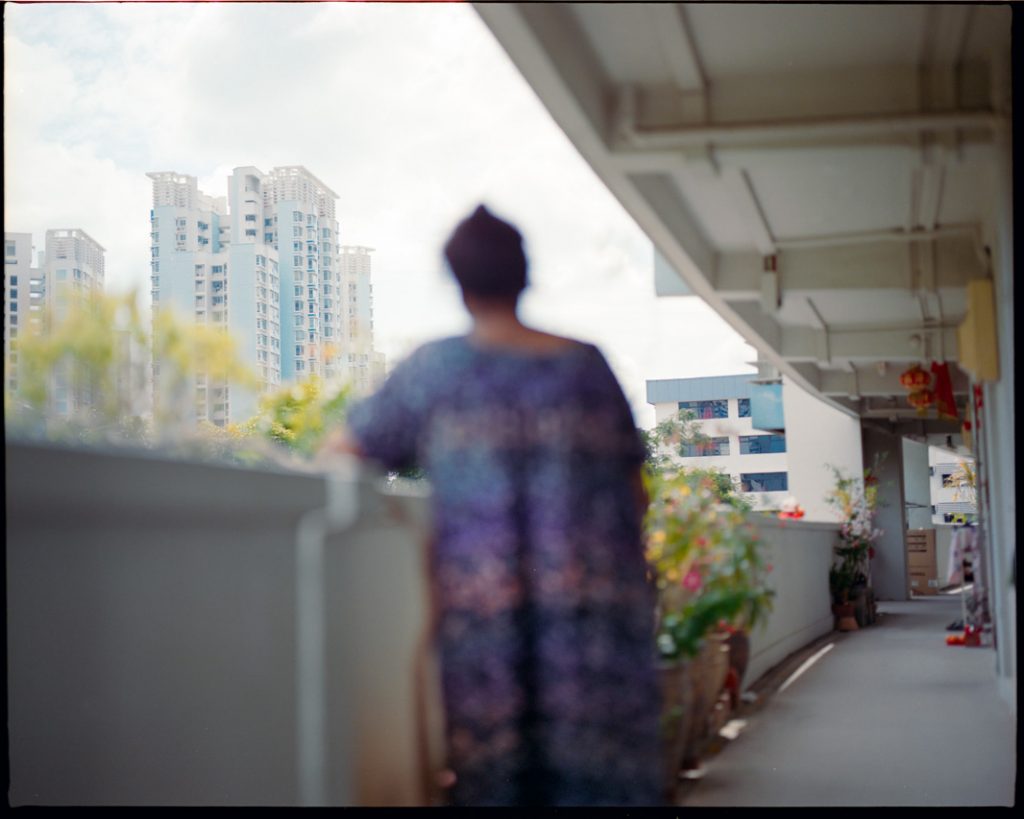
She and her sisters wanted to be closer after their parents passed away so that they could help one another if anything untoward happened. Staying close by also means that they could go for breakfast or share a Grab to head somewhere together.
Similar to Buvana, I noticed her front doors were left open. Does she mind if people look into her house?
“See see lah. What is there to hide? Nothing to hide.”

Contrary to the older blocks, Auntie Nisha observes that people living in the new HDB apartments generally don’t leave their doors open. When she paid her relative a visit at his new unit, all his neighbours’ doors were closed. Her relative also didn’t know them well.
“If you don’t have a friendly neighbour, your plants will die,” she chuckles. On that, I can relate. The stress of finding someone and giving specific instructions to take care of your plants while you’re away—oh man.
“You should have a good rapport with your neighbours to get help,” Auntie Nisha affirms. She is confident that if she shouts for help, her neighbours will rush to her aid.
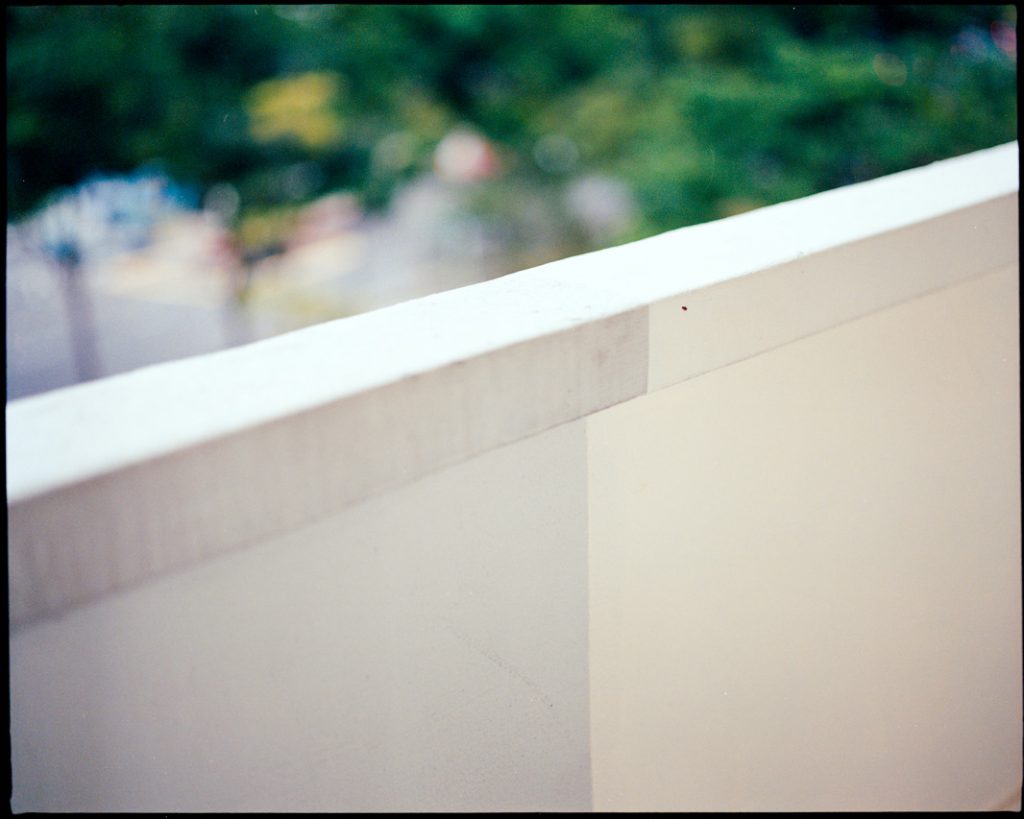
It Takes a Kaypoh Hand
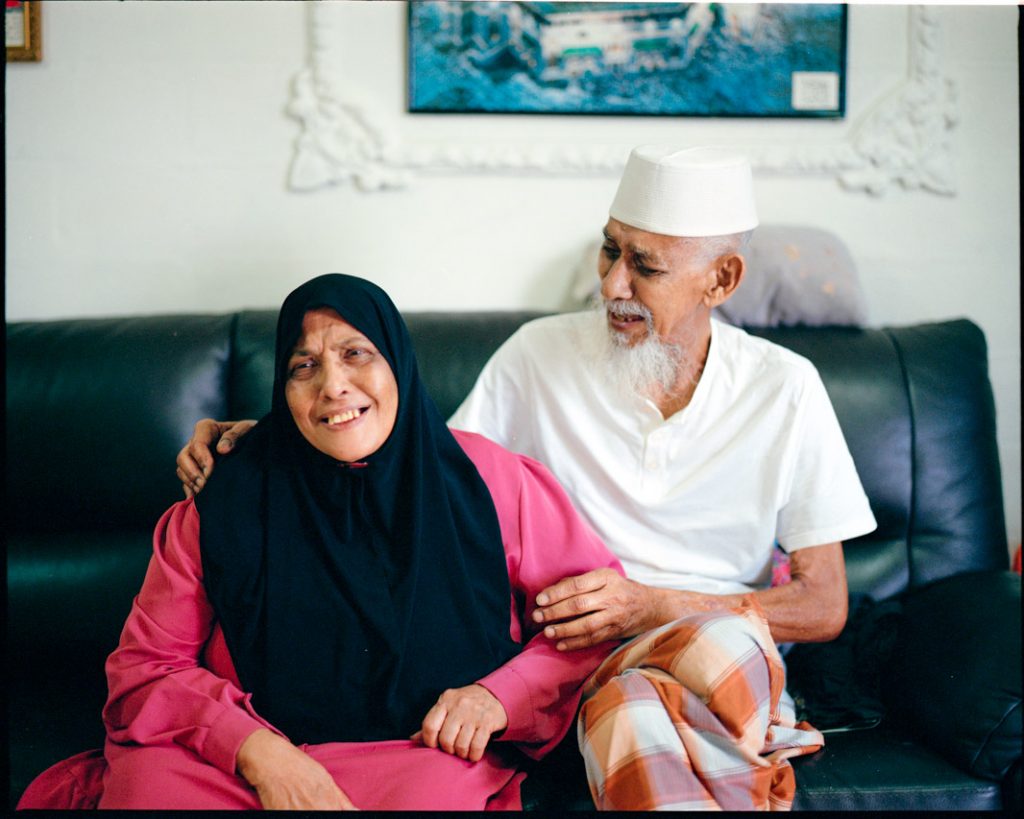
Having moved here from a kampung, Uncle Hamid defines the kampung spirit as “if anything happens, everyone in the kampung will come and help. We are like one big family”.
The 79-year-old adds a sombre point.
“There’s no more kampung spirit when we moved here.”
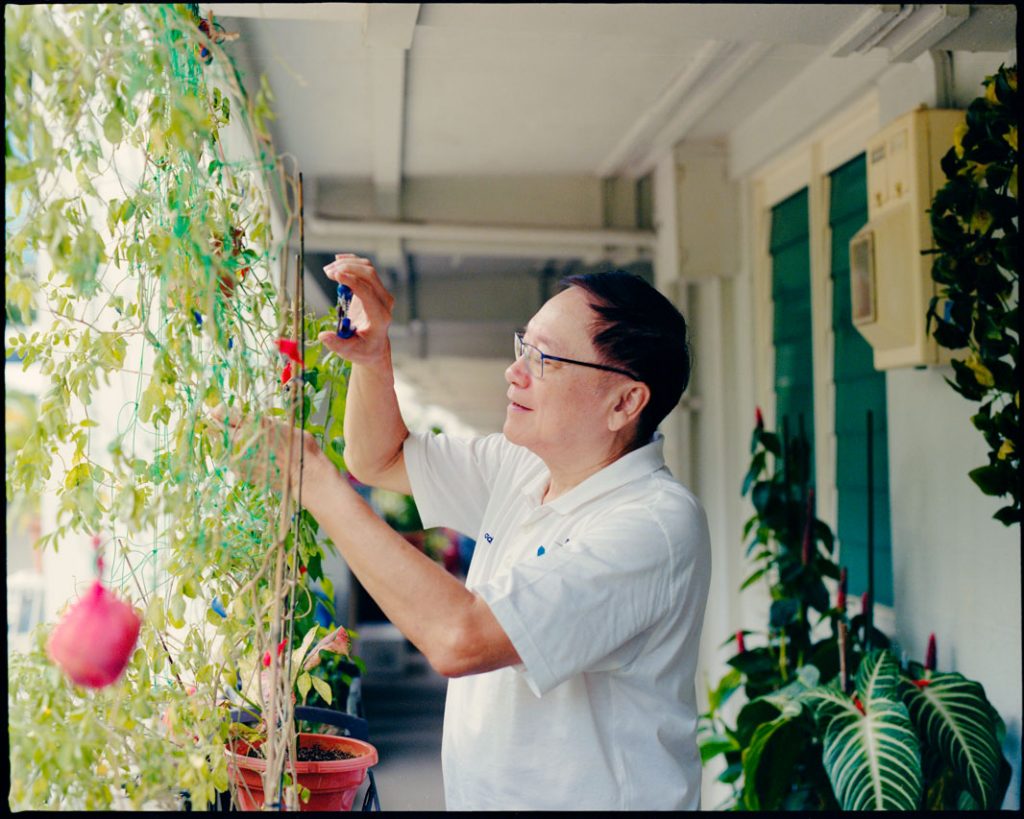
I wander further down the block only to find Uncle Tommy Wong.
You might recognise Uncle Wong if you grew up watching dramas like C.L.I.F and Good Morning Sir on Channel 8. I caught him tending to his beautiful plants along the corridor and was introduced to his wife, Auntie Lee. We end up having a conversation for over an hour in their living room.
Despite only living here for two years, Uncle Wong knows the neighbourhood’s ins and outs. He knows what time cardboard collectors gather around a block nearby and how many community cats there are downstairs.
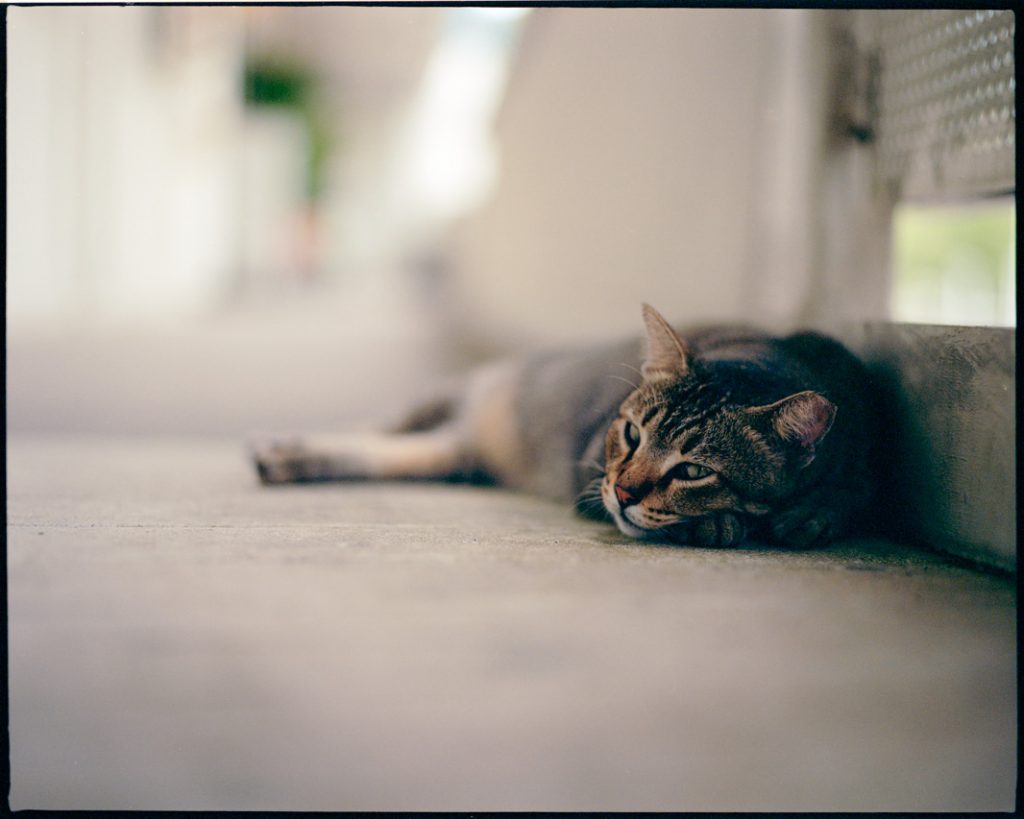
Midway through our conversation, Uncle Voon, his next-door neighbour, walked past the corridor, and Uncle Wong called him to join us. Like me, he was offered a cold drink.
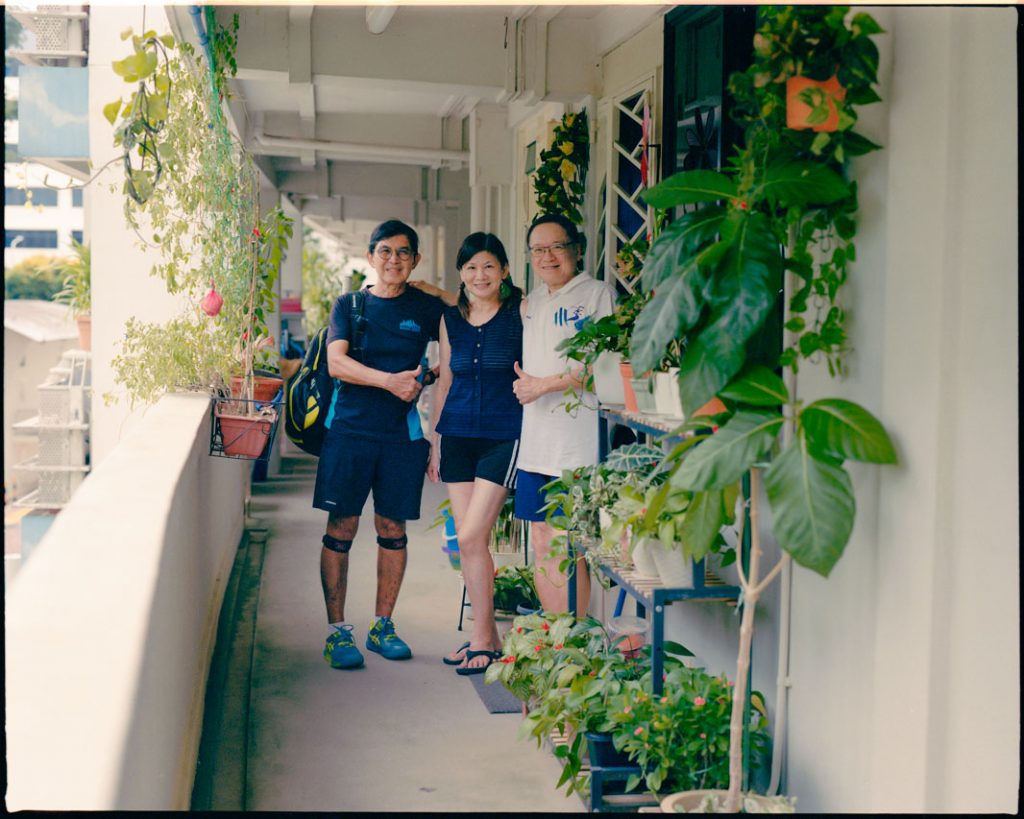
Since I started this photo essay, I haven’t met any neighbours who were as close as these two gentlemen. I wanted to know their thoughts on the kampung spirit.
“There’s no kampung spirit anymore because we have progressed from a kampung to an urban city. The culture of comparing wealth has led to jealousy and losing that spirit is a natural progression.”
Uncle Voon
“It’s difficult to have kampung spirit unless you have someone like him who is fond of talking,” Uncle Voon chuckles, pointing to Uncle Wong.
Uncle Wong smirks. “I am very kaypoh.”
His kaypoh-ness includes reading and translating English letters for his elderly neighbour and asking his neighbours to help themselves to his pandan leaves.
He also gave Uncle Voon’s son, Fred, blue pea pods after Fred complimented his beautiful plant when he walked past the corridor.
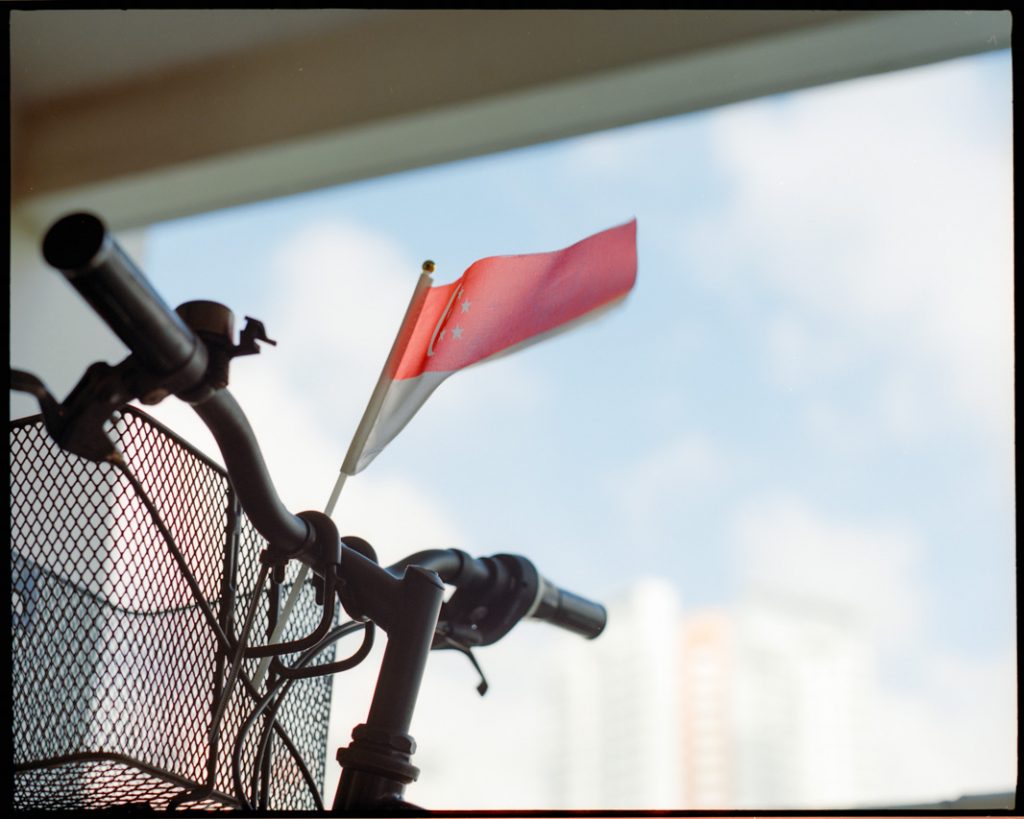
It makes sense that something has to give in exchange for the progress our nation has achieved.
Fred, 38, agrees that the younger generation is more reserved. His dad often chats with Uncle Wong, while he prefers to keep to himself.

According to a quick Google search, blue peas are easy to grow. As I walked over to knock on the next door, I crossed my fingers, hoping Fred had successfully grown the blue pea pods Uncle Wong gave him.
Fred reflects on HDB’s intention in the ’70s to build blocks with long corridors to make living spaces more lively and communal.
“Some habits and cultures just fade away and die out. I think the time has passed when you’re that close to your neighbours.”
Fred
“How do you think we can improve our relationship with our neighbours then?” I asked.
“It would be nicer if we were kinder to each other, so it’s not even about our relationship with our neighbours anymore; it can be how we interact with a stranger on the street in our everyday life,” he responds.
“Simple human interaction with other people is possibly more meaningful than whatever you chase or are currently obsessed with. I don’t think it’s just in Singapore, it’s the city life.”
The blue pea pods given by Uncle Wong have indeed sprouted into a plant under Fred’s care. He lets me photograph it.
After taking the final shot, I ponder Fred’s words, convinced that kindness, like blue pea seeds, can flourish if we take the initiative to share it. We can all afford to be a little more kaypoh and let the roots of neighbourliness grow once again.




